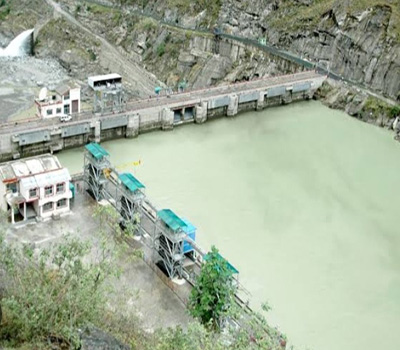Stakeholders Call for Priority Sector Lending for Small Hydropower Projects to give them a push mainly in the Himalayan region
SHIMLA: A special consultation meeting was held today to discuss the Draft National Small Hydropower Policy, 2024, proposed by the Ministry of New and Renewable Energy (MNRE), Government of India.
The meeting was chaired by MNRE Secretary Bhupinder S. Bhalla and Chief Secretary Prabodh Saxena.
Bhalla said this initial meeting aimed to address challenges and gather feedback from Independent Power Producers (IPPs), representatives from the Ministry of Forests and Climate Change, developer associations, and financial institutions.
The goal is to set up small hydro projects (SHPs) between 5 MW to 25 MW.
Bhalla said MNRE's target is to achieve 500 GW of installed electric capacity from non-fossil sources by 2030, with 201.8 GW already installed as of March 2024.
While solar and wind energy are prioritized, small hydropower (SHP) also holds significant potential, especially in Asia.
India has an estimated SHP potential of over 21 GW, with around 5 GW installed, particularly in Himachal Pradesh.
Bhalla said MNRE would consider providing financial incentives to promote SHPs.
Chief Secretary Saxena said Himachal Pradesh has advanced significantly in hydropower generation.
He suggested increasing the exemption from catchment area treatment plans for SHPs from 10 MW to 25 MW to boost hydro power generation.
He said banks and financial institutions are hesitant to finance hydro projects, making it crucial to include SHPs under Priority Sector Lending (PSL) guidelines.
Saxena also urged the reinstatement of Central Financial Assistance (CFA) to support developers and expedite project completion.
He expressed concern about delays in obtaining forest clearances and called for MNRE's intervention with the Department of Environment and Forests.
Prof. Arun Kumar from IIT Roorkee presented an overview of the challenges faced by SHPs, including financial and technical issues, and encouraged stakeholders to provide their inputs to MNRE.
Arun Sharma, President of the Federation of Small Hydro, stressed the need for a robust policy to address the concerns of small hydro power producers.
Senior scientist Dr. Sangita M. Kasture from MNRE outlined the objectives.
Delegates from various states, including Arunachal Pradesh, Kerala, Madhya Pradesh, Jammu and Kashmir, Uttarakhand, Punjab, Sikkim, Odisha, Andhra Pradesh, and Tripura, shared their inputs
In all they focused on reasonable and uniform premiums and the abolition of free power/royalty.
But this demand of IPPs is unreasonable as surplus power producing states like Himachal is giving 150 units of free power per month to consumers and Power projects are the only sustainable sources of state revenue.
Other officials included MD HPSEBL Harikesh Meena, Director HIMURJA Shubhkaran Singh, and senior MNRE scientists.
The meeting addressed financial, technical, and regulatory challenges to promote small hydropower development and contribute to India's renewable energy goals.
All said and done, the small power projects are more sustainable and ecofriendly considering the fragile ecology of the Himalayan states.
Even locals are up in arms against the big dams and power projects that have almost stalled the works in Lahaul-Spiti to Arunachal Pradesh.
Local NGOs and locals are watching the new Draft Policy for SHPs 2024 with keen interest call for urgent needs to integrate their inputs for the SHPs Power policy before giving it a final shape.




